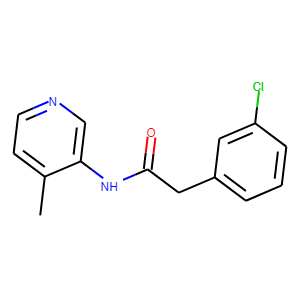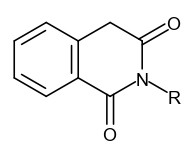Many congratulations on this great work! The results clearly resolve between compounds with different potencies and there are IC50s as low as 1.8 uM. I am only an enzymologist, but to me several compounds look very interesting with good ligand efficiencies and clogP values. Unfortunately, I have been unable to determine whether there are crystal structures for complexes with these compounds.
Seventeen out of the 18 dose-response curves give slopes greater than 1, possibly because there is some positive co-operativity.
Why do compounds with covalent warheads appear to give reversible inhibition?
Several of these inhibitors have covalent warheads. However, the kinetic data strongly suggest reversible inhibition (because IC50s are well above the 5 nM enzyme concentration and the data don’t show a very steep dose-response which is characteristic of irreversible inhibition). Possible reasons for these compounds not giving irreversible inhibition are:
- The warheads are not positioned correctly relative to Cys145, or have insufficient reactivity.
- Covalent inhibition occurs, but is reversible.
- The compounds react with something (maybe TCEP?) and inhibition is by a product.
For med chem progress, it seems important to elucidate what is happening. Crystal structures will show if there is covalent bond formation.
I agree with Pete Kenny that direct kinetic studies are needed to characterise any irreversible inhibitors.
Experimental protocols
When using recombinant enzyme, it is important to be sure the assay is following the correct activity, rather than a contaminant. I assume these assays do follow MPro, but it would be re-assuring to confirm that SAR from IC50s is in agreement with crystal structures.
For MPro from SARS-Cov, valid kinetics require a full-length construct with authentic N- & C-termini (Xue et al, 2007, J Mol Biol 366, 965). Given the 96% sequence identity, I expect MPro from SARS-Cov2 has similar requirements. The MPro construct used for these IC50s is not stated.
A similar substrate against a similar enzyme gave a Km of 40 uM (MPro from SARS-Cov, Xue et al 2007), and the data from Nir London & Haim Barr used 375 nM substrate. (So not many turnovers for 5 nM enzyme, especially given rate tends away from linear after using around 10% of the substrate.) I often recommend using substrate at its Km value to balance sensitivity between competitive, noncompetitive and uncompetitive inhibitors. This assay, therefore, probably disfavours uncompetitive compounds. The same bias occurs when screening the free enzyme by crystallography and mass spec. This may be acceptable because uncompetitive inhibitors probably are rare.
Choice of reducing agent
It can be difficult to optimise assays for enzymes involving a catalytic Cys residue, balancing the need to prevent oxidation with the possibility of reducing agents perturbing the results. Using “papain-like” protease from SARS-Cov, Lee et al (2012, Analyt Biochem 423, 46) determined kinetic parameters, hit rate and IC50 values to compare no reducing agent with the physiological reduced glutathione (GSH), DTT and TCEP. It was recommended to use 5 mM GSH. I have been involved with a project, which found similar discrepancies with a cathepsin. I usually recommend use of 5 mM GSH, but it needs to be a fresh solution because it is limited stability. A stronger reducing agent may be required to store the stock enzyme solution.
The studies of Nir London & Haim Barr use 1 mM TCEP, which could affect potency of some inhibitors.
GSH stability data would be informative
It is advisable to measure stability in GSH, to ensure active compound is not depleted excessively inside cells. Poor stability in GSH (or TCEP) also could compromise isolated enzyme data, because IC50 measurements assume that inhibitor concentration is constant throughout the assay.
Suggestions for future work
I feel uncomfortable recommending further work, because I know everyone has so much to do and has already completed. Some of these suggestions have already come from other people:
• In the database, link IC50 and crystal structure on a compound by compound basis.
• If not already studied by crystallography, med chem may be helped by directly investigating whether active compounds with covalent warheads actually do give reversible inhibition (eg by dilution) or covalent inhibition (eg by mass spec).
• Stability in GSH should be measured for active compounds that contain covalent warheads.
• Kinetic characterisation (measurement of Ki and kinact) for compounds giving covalent inhibition.
• Consider whether the team are comfortable with the prospect of missing uncompetitive inhibitors.
• If any apparent inconsistencies develop with other data (eg activity in cells), it may be worth testing compounds using GSH rather than TCEP.
Once again, thanks for performing and sharing this excellent work.
Wal


 :
:
